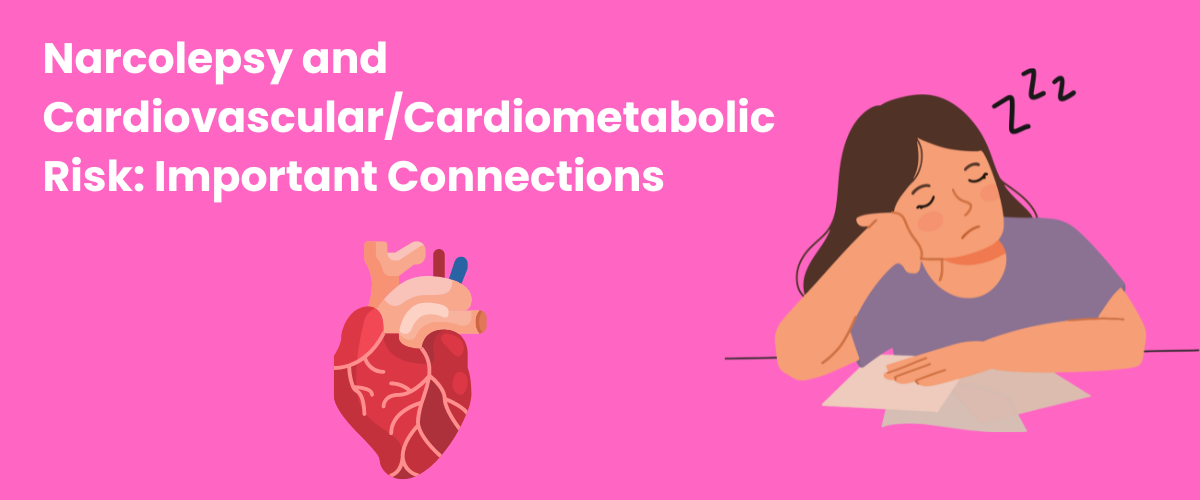Narcolepsy is a chronic neurological sleep disorder that is characterized by excessive daytime sleepiness, disturbed nighttime sleep, REM dysregulation, and short REM sleep latency. It is estimated that the number of people suffering from narcolepsy in the United States is 135,000 to 200,000, and it impacts one in every 2000 people.
Patients with narcolepsy may fall asleep suddenly and the period of sleep may last from a few seconds to as long as an hour or more. The symptoms of narcolepsy can include excessive daytime sleepiness, cataplexy, sleep paralysis, hypnagogic hallucinations, and automatic behaviors. Cataplexy is often triggered by laughter or surprise, and sometimes fright, anger, or being startled. The excessive daytime sleepiness is a consistent symptom in all patients with narcolepsy, with the other symptoms occurring in approximately 10% to 25% of patients. Patients may also experience lack of energy, fatigue, depression, visual problems, weakness, difficulty concentrating, eating binges, and less tolerance to alcohol. These problems can affect daily activities as patients often fall asleep in the middle of an activity, such as driving, eating, or talking, and if not treated, can interfere with academic, social, and work activities by hindering cognitive, social, and psychological functioning.
Several cardiovascular and cardiometabolic comorbidities, including overweight/obesity, dyslipidemia, cardiovascular diseases, hypertension, and type 2 diabetes or insulin resistance, are common in patients with narcolepsy. Often these disorders are overlooked, but they have important implications in the management of patients with narcolepsy.
Narcolepsy type 1 (NT1) is a disorder attributed to autoimmune destruction of orexin (hypocretin) neurons, leading to sleep-wake instability, REM dissociative symptoms, and cataplexy. The pathways that connect orexin and orexin deficiency to cardiovascular and cardiometabolic risk are numerous and not fully elucidated, however, several mechanisms of association have been proposed. Orexin deficiency is associated with increased food intake and reduced basal metabolic rate (BMR), thus increasing the risk of overweight and obesity. In addition to the awake circuit, orexin also plays a role in control of autonomic tone and in the hypothalamic-pituitary-adrenal (HPA) axis, which plays an important role in the homeostasis, including the metabolic and cardiovascular systems. In fact, the interrelationships between hypocretin deficiency, DNS (disrupted nighttime sleep), EDS (excessive daytime sleepiness), comorbidities, and cardiometabolic risk, are often complex, and as mentioned above, not fully elucidated. At present, it is not clear whether narcolepsy type 2 (NT2) is also impacted by increased cardiometabolic risk.
These hypotheses, often derived from preclinical research, are also supported by epidemiological data. For example, obesity is common in both children and adults with narcolepsy, and weight increase may occur at time of onset of narcolepsy; in turn, obesity can predispose for several other cardiometabolic comorbidities as well as obstructive sleep apnea. As such, narcolepsy patients are at increased risk for insulin resistance and diabetes, and cardiometabolic comorbidities, including type 2 diabetes, dyslipidemia, and hypertension are prevalent in these patients. Given these risk factors, it is not surprising to find out that cardiovascular disease (including stroke, MI, coronary revascularization, heart failure, and cardiac arrest) is more common in patients with narcolepsy than those without, as shown in the BOND study, and that mortality rates in narcolepsy patients are estimated to be higher compared to those without narcolepsy.
References
- Berteotti, Chiara, and Alessandro Silvani. “The link between narcolepsy and autonomic cardiovascular dysfunction: a translational perspective.” Clinical Autonomic Research 28.6 (2018): 545-555.
- Bhattarai, Jagriti, and Scott W. Sumerall. “Diagnostic Delay of Narcolepsy: Contributing Factors and Implications for Clinicians.” Sleep and Vigilance 2.2 (2018): 103-109.
- Black, J., et al. “Medical comorbidity in narcolepsy: findings from the Burden of Narcolepsy Disease (BOND) study.” Sleep medicine 33 (2017): 13-18.
- Bosco, Adriana, et al. “Effect of psychostimulants on blood pressure profile and endothelial function in narcolepsy.” Neurology 90.6 (2018): e479-e491.
- Cohen, Alexander, et al. “Comorbidities in a community sample of narcolepsy.” Sleep medicine 43 (2018): 14-18.
- Jehan, Shazia, et al. “Obesity, obstructive sleep apnea and type 2 diabetes mellitus: Epidemiology and pathophysiologic insights.” Sleep medicine and disorders: international journal 2.3 (2018): 52.
- Jennum, Poul Jørgen, et al. “Cardiovascular Disorders in Narcolepsy: Review of Associations and Determinants.” Sleep Medicine Reviews (2021): 101440.
- Mahoney, Carrie E., et al. “The neurobiological basis of narcolepsy.” Nature Reviews Neuroscience 20.2 (2019): 83-93.
- National Institute of Neurological Disorders and Stroke. “Narcolepsy fact sheet. National Institute of Neurological Disorders and Stroke.” Updated September 30, 2020. Accessed January 25, 2023. https://www.ninds.nih.gov/Disorders/Patient-Caregiver-Education/fact-Sheets/Narcolepsy-Fact-Sheet
- Nordstrand, Sebjørg EH, et al. “Obesity and other medical comorbidities among NT1 patients after the Norwegian H1N1 influenza epidemic and vaccination campaign.” Sleep 43.5 (2020): zsz277.
- Ohayon, Maurice M., et al. “Increased mortality in narcolepsy.” Sleep 37.3 (2014): 439-444.
- Plazzi, Giuseppe, Heather M. Clawges, and Judith A. Owens. “Clinical characteristics and burden of illness in pediatric patients with narcolepsy.” Pediatric neurology 85 (2018): 21-32.
- Poli, Francesca, et al. “High prevalence of precocious puberty and obesity in childhood narcolepsy with cataplexy.” Sleep 36.2 (2013): 175-181.
- Zamarian, Laura, et al. “Subjective deficits of attention, cognition and depression in patients with narcolepsy.” Sleep medicine 16.1 (2015): 45-51.
